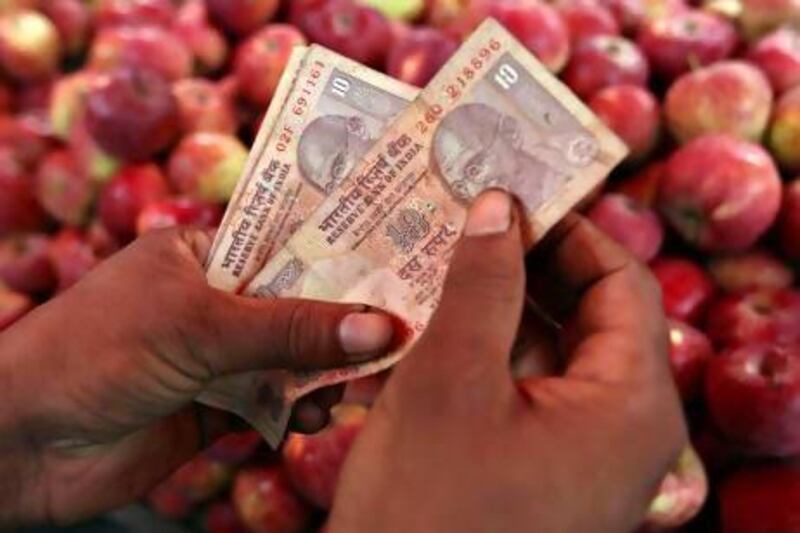The Indian rupee plunged to yet another record low against the US dollar and stock markets slumped yesterday as a slew of measures announced by the government and the central bank last week failed to stem the currency's slide.
The rupee hit an all-time low of more than 63 against the dollar yesterday. The benchmark S&P BSE Sensex continued to fall, dropping 291 points following a sharp decline on Friday.
Billions of dollars have been pulled out of Indian debt markets by foreign institutional investors in the past few months, triggered by expectations of the US Federal Reserve tapering its quantitative easing programme.
The weakness of the rupee has led to a surge in remittances from expatriates working in countries such as the UAE, where they can buy more rupees for the dirham.
"The Indian rupee continues to be the worst performer among currencies in Asia, which is definitely not a good sign for the Indian economy," said Promoth Manghat, the vice president of global operations at UAE Exchange.
"External factors include the strengthening of the dollar, while internal factors include inflationary pressures, the falling of dollar inflows in terms of foreign direct investment and increased outflow in terms of oil, and gold settlements. It all amounts to the widening of the current account deficit, which worsened the scenario as the economy failed to bring in more capital inflows."
Steps announced by the Indian government last week to narrow the country's current account deficit and support the rupee included curbing gold imports.
The Reserve Bank of India on Wednesday unveiled a wave of aggressive measures aimed at reducing outflows of foreign exchange. These included reducing the amount that Indian residents can remit each year to $75,000 from $200,000. It also lowered the cap for overseas direct investment by Indian companies from 400 per cent of a firm's net worth to 100 per cent.
Further measures were expected to be taken by the central bank to prop up the rupee.
"Two factors have to be accounted for. First, the inflation differential between India and the rest of the world will lead to rupee depreciation," said Kamal Sen, the president and chief executive of Cogitaas AVA, a consultancy. "Therefore, long-term inflation and expected inflation have to be managed. Second, in terms of restrictions, gold imports are a huge source of import payments and though the government has raised import duties, gold imports remain very high."





